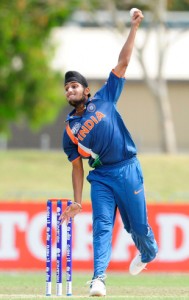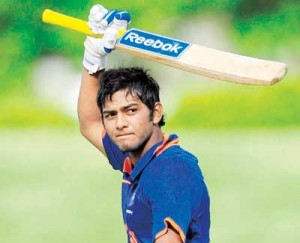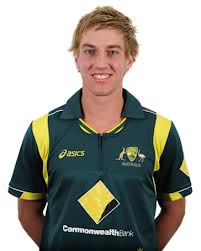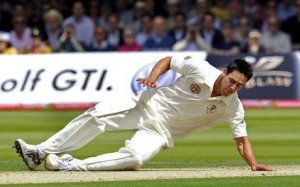
A gradual but inevitable descent into cricket-based loathing and bile.
Under-19 World Cup Review
In all honesty, most of us here at 51allout can’t really remember much about what we did when we were 19. That’s not because we were engaged in the sort of hedonism the likes of which would make even your average IPL player blush. No, it was mostly because we routinely slept ’til noon before spending what was left of the day playing video games, working at the local supermarket or furtively indulging ourselves in….well, let’s just say indulging ourselves. We certainly weren’t the sort of people who could stride to the crease after your side, after being put in, found itself at 8/2 and set about rebuilding things. We probably wouldn’t even have been out of bed yet.
But given the ball’s dominance over the bat in the recently completed Under-19 World Cup, that’s just the sort of scenario the competition’s middle order batsmen have consistently been confronted with. Success in the tournament has hinged on a team’s ability to rebuild from the middle order after things go tits up early doors. It’s fair to say that outfits like England and Pakistan haven’t coped with it well, whilst Australia and New Zealand have been far better at it. In fact it’s even fairer to say that Australia and India both made the final for the exact same reason; they had the depth and the experience to not only overcome poor starts, but to then convert them into competitive totals.
Teams such as England, South Africa and Pakistan, who came to the competition boasting of some of the most promising youngsters going around (players like Quinton de Kock, Reece Topley and Usman Qadir) fared far worse than expected. Both England and South Africa would have expected to make the final before the tournament started. That they were knocked out by a, frankly, pretty average but far more consistent overall Australian outfit tells the tale. This wasn’t a tournament for the stars; aside from Unmuckt in the final, none of those who we highlighted in our series preview really shone. Instead success was built on important contributions from across the whole lineup.
That the ball managed to dominate the bat to the extent that 220+ was considered a more than competitive total drew some criticism of the Townsville pitches the games were played on. In truth the low totals were the outcome of two factors. The first was the use of two new balls in a innings, one from either end, in line with current international practice. This meant that early wickets were the norm and that most teams spent the first three powerplays reconstructing their innings rather than taking advantage of the fielding restrictions. The second, and probably more important factor, was the wealth of quality spin bowlers on display who were able to keep things tight in the middle overs.
Two spin bowlers in particular could be expected to make their senior international breakthroughs in the near future: India’s Harmeet Singh and South Africa’s Prenelan Subrayen, who is already a better option than Imran Tahir. The Australian spinning all-rounder, with the appropriate initials of A. Turner, also impressed. There was also on display a wide variety of left arm filth merchants as well (most of whom will probably sign for Pune in the next IPL campaign), but those above stood out from the norm as real talents to watch.

Harmeet Singh; according to Ian Chappell already the second best spin bowler in the world. Number one is obviously Nathan Lyon.
Surprisingly, given the early flurry of wickets which introduced each match, there were fewer fast bowling standouts. Of these, probably the aforementioned Reece Topley, along with the Australian pair of Matthew Paris and Gurinder Sandhu stood out the most. The Indian born Sandhu’s performances must grate for Indian fans (which is highly amusingly for the rest of us), for the Indian pace attack didn’t showcase anything we haven’t seen from that part of the world before, mostly featuring players capable of achieving late swing, but rarely at speeds in excess of 130kph.
As for the batsmen, there were even fewer standouts. Anamul Haque of Bangladesh topped the charts with 365 runs at an average of over 60. We predict he will goad Bangladesh supporters with glimpses of greatness for the next ten years, before ultimately disappearing into Ashraful-esque obscurity. William Bosisto, the Australian captain, also impressed, scoring 276 runs and only being dismissed once during the tournament. Being that he is also the spitting image of Cameron White, expect to see him on the fringes of the national team in the near future, or possibly featuring in a new series of KFC ads. The other batsmen who featured highly in the runs scored stakes mostly did so as a result of cashing in against one of the minnows.
In terms of the minnows, Afghanistan, who finished tenth, probably impressed the most, along with Bangladesh, who defeated a disappointing Pakistan in their final match to finish the tournament in seventh place. The Kiwis showed that their cricketing education must begin at a young age, as they understood perfectly the need to get to the semi-final stage of an international tournament before getting thrashed. Their humiliation by South Africa in the third place playoff was neither here nor there, and we suspect a couple of their players were still dining out on the 18 runs they hit in the last over to clinch a dramatic last ball victory over Pakistan in the quarter finals.
There was something refreshing about watching the Under-19 World Cup. Mostly it was probably because of the unknown quality of most of the players, and the fact they haven’t had the opportunity to expose themselves as utter twats yet. Which meant you could happily support your nation without needing the sorts of caveats that typically go along with supporting a senior team. Like hoping that Australia regains the Ashes, but only if in the process Mitchell Johnson accidentally takes a stump to the head at some point.




No Comments
Post a Comment